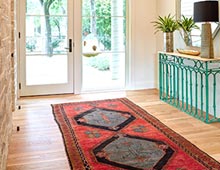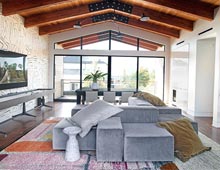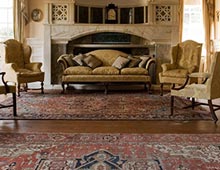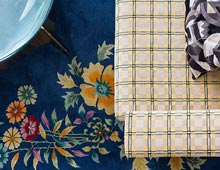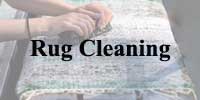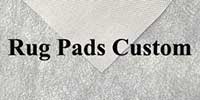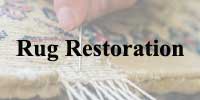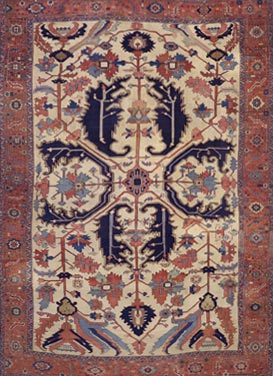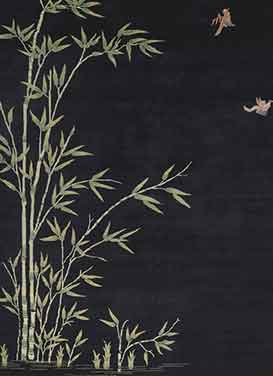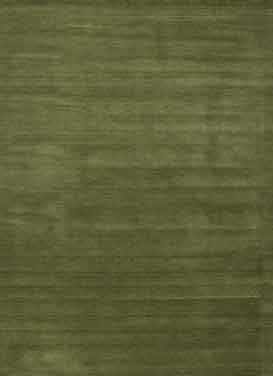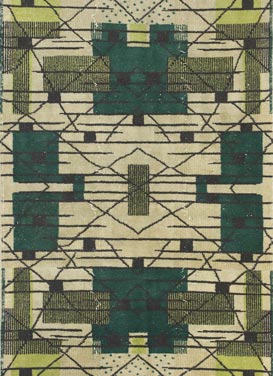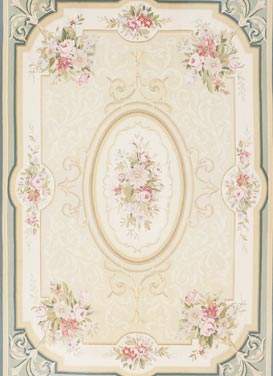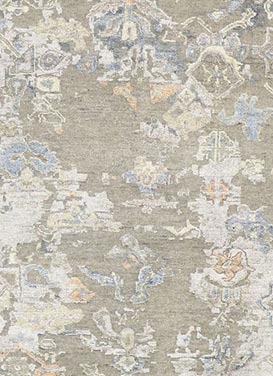Understanding Symbolism in Persian & Other Antique Rugs

For those of us working in the antique rug world, the differences among Persian, Oriental, Moroccan, Turkish and kilim rugs are obvious, just as it’s obvious whether we’re standing on a factory-made, Oriental-style area rug or an authentic, antique Persian rug.
For the average person, though, such differences aren’t so obvious. But the weavers who produced fine Persian and other antique rugs tell their stories in every stitch. When you understand how to “read” the symbols and patterns in these rugs, you can connect with the weaver’s story, as well as that of his or her community and society. In fact, some rug experts can determine a rug’s city and country, or even the district, of origin, and the symbols and patterns found reveal historical insights about those places.
To help you understand the symbolism in antique rugs, we’ve put together this guide to the many symbols, motifs and designs found in rugs. When you can read and interpret an assortment of rugs, it’s likely that one of them will speak to you.
Rug Design Components

A rug design is comprised of several components, so let’s first define those:
- Borders: There are usually two borders on a rug — the main border is the widest section of design around the outside of the rug, while the guard border is usually narrow and lies inside the main border.
- Field: The field is the colorful background inside the borders.
- Medallion: Often, rugs feature a medallion in the center of the field. This is a large shape — round, oval or polyagonal — that sits prominently in the middle of the rug.
- Corner brackets, quarter panels or spandrels: These are designs that fill the corners of the field.
Typically, rugs will consist of all-over patterns, known as motifs, or they will contain a central medallion around which the rest of the rug is designed.
Your Guide to Antique Rugs
Now let’s talk about the various places from which our rugs originated. The term “Oriental rug” is ubiquitous, and it’s often used to refer to rugs that may or may not hail from the Orient. Esmaili Rugs & Antiques features stunning Oriental, Persian and other antique rugs, but each region produces distinctive rugs with its own unique traits.
ORIENTAL OR PERSIAN?

Persian rugs — considered the grande dame, the queen mother, the standard by which other rugs are measured — are Oriental, though not all Oriental rugs are Persian.
The term “Oriental rugs” applies to those rugs produced in Asia, in the region spanning from India through the Middle East and into China. Oriental carpets may hail from Pakistan, Tibet, Nepal, Turkey, China or Iran; however, no rug is considered Persian unless it was produced in Iran. Authentic Oriental rugs are hand-knotted.
Symbols in Oriental Rugs
Colors play a major role in conveying the story of a rug. Green, for instance, is the color of the Prophet Mohammed, and it is used sparingly, as it is least likely to be stepped on. It represents hope, renewal, spring and life. Others are as follows:
Red: wealth, courage, beauty, luck, joy or faith
White: purity and cleanliness
Blue: the afterlife, solitude and truth
Black: mourning or destruction
Brown: fertility
Yellow: power and glory, joy, the sun
Orange: devotion, piety, humility
Symbols in Oriental rugs can be found in various iterations in rugs from many locations, including Persian, Turkish, Indian and others. The primary symbols include:
- Ram horns: a symbol of male fertility, strength, bravery
- Herati: mahi flower, fish, good luck
- Boteh (paisley): seed of life, fertility, eternal life, pregnancy
- Elibelinde (hands on hips): Anatolian symbol of the mother goddess, mother with child in womb, fertility, abundance
- Tree of Life: symbol common in many religions, reminds us of our desire to become divine, symbol of the afterlife and immortality, hope, heaven, eternal paradise
- Dragon: wisdom, power, guardians of the tree of life, good fortune
- Stars and Crosses: protective motifs, found in rugs of varying origins, offer protection against evil, catastrophes or ill will. Connotes happiness.
- Mihrab: paradise gateway
- Camel: strength, endurance, blessing
- Peony: rank and wealth
- Lotus: immortality, rebirth
- Lily: spirituality, purity
- Gul (gol): sun, moon, stars
- Ying Yang: balance, harmony
- Amulets: Often (but not always) triangular in shape, sometimes in center medallion, intended to rid the user of evil spirits.
- Birds: Whether it’s a phoenix, an eagle, a peacock or a dove, most birds symbolize good luck, power, happiness and love. Some birds, however, such as ravens and owls, mean bad luck and death.
PERSIAN — THE FINEST OF ALL RUGS

What makes a Persian rug the finest of them all? Put simply, they are some of the most complex and labor-intensive handmade items in the world, and they have been made the same way dating back to ages BC. They are produced by nomads, shepherds from the Quashqui and Bakhtiari tribes, whose approximately 1.6 million sheep graze on the green slopes of Iran’s Fars Province, which is considered the homeland of Persia. Their wool, comprised of long, tough fibers and shorn only once each year, is ideal for carpet-making and makes these rugs exceedingly durable and long-lasting. The fibers are twisted into threads by the hands of tribal women, then they are colored with dyes made from natural ingredients such as pomegranate, turmeric, acorn shells or green leaves, which are boiled in huge pots with the threads. Once dried, the threads are woven on looms using a trademark single looping knot.

Symbolism in Persian rugs is passed down from generation to generation, and these designs are considered trademarks. They include dense, all-over patterns; rich, striking colors (especially red); and medallion motifs. Each style of Persian rug is named for the town or province in which it was made, and each has distinguishing features. The symbols often were believed to protect the rug’s owner from misfortune. The symbols in Persian rugs may represent historical monuments, scenes from daily life, Islamic buildings, weeping willows or other trees and religious imagery such as the Tree of Life or the Garden of Paradise.
Persian rugs in particular tend to feature four distinct all-over patterns, or motifs. These are:
- Herati: This pattern comes from the town of Herat, now in Afghanistan. It consists of a diamond framework and a single floral head, surrounded by outwardly curling acanthus leaves. Sometimes it is referred to as mahi, the Persian word for fish, because the leaves have a sort of fish shape. Herati may be used in medallion or all-over patterns. Herati motifs are thought to symbolize the small fishes that come up just beneath the surface of the water to swim in the full moon's reflection.
- Boteh: Along with Herati, Boteh is one of the most commonly found Oriental carpet patterns. It is recognizable because of its resemblance to paisley or a tear drop, with its pear-shaped figure and extending arch of flowers, symbolizing the garden of paradise. Some believe it represents fertility, pine cones, a cypress tree, a leaf, a flame or even a male sperm.
- Vase: This pattern name refers to rugs that incorporate a vase or group of vases in their design. Typically, the vase resembles a Grecian urn, with or without handles.
- Göl: Uses a repeating octagonal pattern to represent an elephant’s foot. Seen especially in Turkish rugs.
- Gül: This floral motif takes its style from the French and usually features one large, dominant flower (often a henna plant) and four surrounding, smaller ones.
Symbols in Persian Rugs
- Resting eagle: high-mindedness of the spirit
- Eagle in flight: good fortune
- Leopard: bravery
- Cypress tree: life after death
- Parrot: escaping from danger, protection
- Peony: power
- Peacock: immortality or divine protection
- Hunting dog: glory and honor
- Tree of Life: truth or understanding, a direct path from Earth to Heaven
- Lily: purity, spirituality
- Paradise Bird: Paradise, or Heaven
- Lotus: rebirth, immortality
- Lion: power
- Iris: religious freedom
- Blossom: youth, spring, newlyweds
- Tulip: prosperity
- Pomegranate: fertility
- Amulet: triangular shape thwarts the evil eye
- Hyacinth: regeneration
- Ewer, or Jug: purification
- Comb: cleanliness
- Diamond: women (two together represents and man and woman together)
- Cross: faith
- Hand: prayer rug
- Mihrab: gateway to Paradise
- Sun: radiant light, lucidity
- Star: spirituality, good luck
- Numbers: used to signify dates and times
TURKISH

Turkish rugs have been highly prized since the 13th century and are considered glorious, collectible works of art. Despite being handmade by nomadic tribes and mountain-dwellers, the rugs’ artistry, luxurious texture and ornate styling bespeak the opulence and wealth of the Ottoman empire. Palaces during the Ottoman reign were heavily laden with luxurious commissioned rugs.
Each rug usually was accompanied by a miniature version called a yastik, which would originally have been folded to make a sort of pillow or draped over sofas to decorate a living room. Trademark Turkish styles feature geometric shapes, clean designs and saturated colors.
There are many different types of Turkish rugs, with each type featuring its own texture and design and representing a specific time and place:
- Kilim: Kilim rugs were produced by migrating nomads, called “Yürüks,” who traveled through the regions of Anatolia, the Balkans and parts of Iran, in often severe climactic conditions, and they lived in tents. They made these pileless flat-weave rugs to cover the tent floors and prevent the insides from becoming damp. As such, they were made of goat hair, which is stiffer than sheep’s wool, making the tent almost waterproof. Some kilims were made as prayer rugs, which are smaller and are designed to include the recognizable architectural feature mihrab, found in mosques and indicating the direction of Mecca in which to turn for prayer. Kilims feature bright colors and tapestry-like textures.
- Oushak: These rugs are made using a particular family of designs that originate in Uşak, Turkey. They’re recognizable for their large scale. They’re predominately made from lustrous wool and silk and feature muted earth tones such as cinnamon, saffron, green, ivory and gray. Usually they feature geometric pattern and you will find them with an allover design or with a central medallion motif.
- Kazak: Made in the Republic of Armenia, Kazak rugs feature striking geometric designs, detailed border patterns and high-quality dyes, usually in red or blue.
- Soumak: Stronger and thicker than a kilim, a Soumak features a flat weave that gives the rug its name. The weave provides a smooth front face and rough back — a herringbone effect that resembles embroidery — whereas a kilim is smooth on both sides. It’s stronger than a kilim though still pileless. The colors found in Soumaks are bright and vibrant.
Symbols in Turkish Rugs

Interestingly, the human figure is considered sacrilegious and therefore is rarely seen on Turkish rugs and kilims. They may be used to remember a departed family member, however.
Typical symbols in Turkish rugs include:
- Star: The Turks of Central Asia once believed that the movement of stars affected people’s destinies and influenced the world’s daily matters. Seeing a star during a dream was considered a sign of happiness.
- Mihrap: a praying niche pattern featuring a place of honor for a king or God, surrounded by flowers, vases and fountains, seen as a gate to Paradise.
- Tree: may be seen individually or in a group, symbolizes unification and reincarnation, the tree of life, life’s regenerative processes
- Plane Tree: the Garden of Eden
- Swastika: the wheel of destiny, a symbol of good luck, abundance and fertility, may symbolize the sun and stars
- Pomegranate: fertility, the seeds also represent the faithful assembling in church. The pomegranate is still seen as a strong token of fertility in Turkey; during marriage ceremonies, friends and relatives throw pomegranate seeds at the couple and use the scattered seeds to foretell how many children the couple will have.
- Triangle/amulets: seen also in Persian rugs, protect against the evil eye, malice and foreign dangers
- Elibelinde, or “hands on hips”: a stylized female, symbol of motherhood and fertility, seen especially on Anatolian textiles
- Fruits and cereals: those with many seeds, including pomegranate and figs, as well as grains such as wheat and barley symbolize fertility
- Jewels of Mohammed: six- or eight-pointed stars seen in Jewish imagery, seen frequently in Turkish rugs
- Ram Horn: shown in pairs, symbolizes fertility, multiplication, health, heroism, power, masculinity and respect. When used with Elibelinde, it represents the father. Curve of horn represents eternity.
- Ewer, or Jug: cleanliness, the faithful performing ablution
- Eye: widely used on kilims, one of the most powerful symbols, used to ward off evil, all good or bad comes through the eyes
- Eye and Arrow: An eye flanked by arrows symbolizes good luck, wish for a good harvest, good luck at hunting
- Hand: good luck, protection against evil eye, blasphemy or magic
- Scorpion: protection from evil, pride and independence
- Serpent: wisdom, power, happiness, fertility, symbol for the god of medicine, warding off malice
- Hooks: protection, used to surround symbols for health and happiness
- Hair band: Presented to a bride during a wedding ceremony, a hair band symbol in a rug symbolizes the desire for marriage, happiness and good luck.
- Earring: a gift to a bride during marriage ceremony, symbolizes marriage and expectations for marriage
- Ying Yang: harmony, balance, love between men and women
- Chest: For Anatolians, the chest symbolizes a bride’s trousseau
- Comb: cleanliness, often used alongside the ewer
- Running Water: paradise, fertility, life, cleanliness, desire to overcome obstacles
- Bird: higher state of being, angels, supernatural help, message from other worlds, happiness, unexpected good news. May be seen on rugs perching on the tree of life.
- Dragon: protection, wards off evil and sickness
- Phoenix: good luck, happiness, destruction and re-creation, reincarnation
- Oleander: protection of happiness
- Camel: importance of camels for the tribal people who make rugs
- Burdock: plant that sticks to clothing and animal hair and wards off evil eye, symbolizes abundance

The most common motifs found in kilims, or prayer rugs, come in four categories: life and its protection, beliefs, animals and plants. The symbols that align with these motifs are as follows:
- Life and its protection: Elibelinde (hands on hips), ram’s horm, hair band, fertility, earring, chest, comb, ying yang, star, evil eye, running water
- Beliefs: amulets, cross, hand, hook
- Animals: various birds, dragon, scorpion, snake
- Plants: tree of life, burdock
MOROCCAN
Hailing from the land of white desert dunes, colorful marketplaces filled with exotic wares and caravans pulled by camels, Moroccan rugs speak to us of a rich and fascinating culture. Those also originating from an Islamic culture, Moroccan rugs tell of their African heritage and climate through chaotic colors, native textures and bold designs. Dating back only to the 20th century, Moroccan rugs feature more contemporary designs than their Oriental counterparts. Though some can be found with flat weave, Berber is the distinctive style of Moroccan rugs, both in shaggy, high-pile rugs developed by those looking for warmth and comfort in the snowy Atlas Mountains, or thin, cool Berber rugs of the Sahara made by those seeking relief from relentless heat. And because the Ben Ourain and Berber Tribe rug-makers were semi-nomadic, their rugs and looms had to be easily transported, which is why few Moroccan rugs surpass seven feet in width.

This contrast in climates and cultures can be found in their designs, with the symbols in Moroccan rugs featuring images of mountains and countrysides as well as those of urban environments, with their crisp geometry and religious monuments.
Symbols in Moroccan Rugs
Rugs are a form of storytelling in Morocco, and each is designed to protect the human spirit and shelter the body from the elements. The colors of Berber tell a tale as well, with red symbolizing strength and protection, blue indicating wisdom, yellow representing eternity and green symbolizing peace.
Typical symbolism in Moroccan rugs includes:
- Barley: a rectangle filled with a checkered pattern of light and dark, a symbol of fertility
- Bird: resembles a cross made of intersecting rectangles, said to carry baraka, a sort of divine power that is believed to ward off misfortune, heal the sick or bring good luck
- Cheeseboard: a triangle containing many alternating dark and light triangles in a checkered pattern, refers to dizzy spells and celestial experiences, maybe religious trances
- Cock: the two-legged figure with a high neck and tail urges prayer and announces sunrise, in some representations evokes Christ’s resurrection
- Crab or Spider: stylized, overlapping X figures with eight “legs” wards off evil, also symbolizes the sun’s rays spreading around the earth. May also symbolize weaving, much as a spider weaves thread.
- Cross: found in all cultures and civilizations, the cross shows the relationship between heaven and earth; the elements of fire, water, air and earth; and masculine and feminine. It can be seen in numerous iterations in Moroccan symbols.
- Dragon: The telltale S shape of the dragon with a tail connotes a figure guarding hidden treasures and symbolizes good and wisdom.
- Eye: concentric diamond pattern that symbolizes protection against the evil eye. The cross in its center deflects evil in four directions.
- Finger: resembles a hashtag or tic-tac-toe board, a symbol of protection
- Frog: An ornate diamond design featuring small diamonds on top and bottom, the frog represents fertility and magical rites.
- Lion’s Paw: This shape resembles the finger symbol with a cross in the middle and a border around the outside. It’s considered a symbol of strength, with the “claws” of the finger offering protection.
- Nose: an hourglass shape turned on its side, with vertical lines to the right and left, representing a crow’s beak. Considered a talisman, a crow’s beak was strung around a child’s neck for protection.
- Partridge Eyes: looks like two checkered dice, a symbol for beauty and femininity
- Saw: a zigzagging line with small lines slashed across it like stitches, the saw is a symbol of metal workers
- Scissors: This X shape is a symbol of metal workers and offers respect to metal to ward it off.
- Seeds: an hourglass shape with triangle bases peering out from above and below it, representing fertility
- Snake and Fish Skeletons: a series of four vertical designs that represent a holy person with magical and medicinal skills.
As you can see, the symbols, motifs and arrangements of Oriental rugs can weave a rich tapestry of stories and the long-ago dreams of the people who made them. This, combined with the durability, quality and uniqueness of each rug means that it will continue to add value to your home for many years.

The knowledgeable consultants at Esmaili Rugs & Antiques are happy to speak with you about the story of any rug that captures your interest. Please feel free to contact us or visit our website for more info on antique rugs Dallas.

